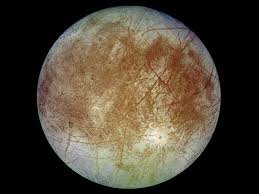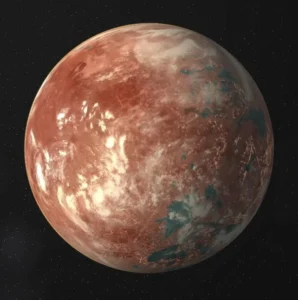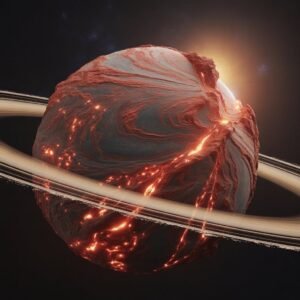Europa, along with Jupiter’s three other large moons—Io, Ganymede, and Callisto—was discovered by Galileo Galilei on 8 January 1610, and possibly independently by Simon Marius. On 7 January, Galileo observed Io and Europa together using a 20×-magnification refracting telescope at the University of Padua. However, the low resolution of the telescope could not distinguish the two objects. The following night, he observed Io and Europa as separate bodies for the first time.
The moon is named after Europa from Greek mythology, the daughter of the Phoenician king of Tyre. Like all the Galilean satellites, Europa is named after a lover of Zeus, the Greek counterpart of Jupiter. In mythology, Europa was courted by Zeus and became the queen of Crete. The naming scheme was suggested by Simon Marius, who attributed the idea to Johannes Kepler:
Jupiter is much blamed by the poets on account of his irregular loves. Three maidens are especially mentioned as having been clandestinely courted by Jupiter with success: Io, daughter of the River Inachus; Callisto of Lycaon; and Europa of Agenor. Then there was Ganymede, the handsome son of King Tros, whom Jupiter, having taken the form of an eagle, transported to heaven on his back, as poets fabulously tell… I think, therefore, that I shall not have done amiss if the First is called by me Io, the Second Europa, the Third, on account of its majesty of light, Ganymede, the Fourth Callisto…
The names fell out of general use for a considerable time and were not widely revived until the mid-20th century. In earlier astronomical literature, Europa was simply referred to by its Roman numeral designation, Jupiter II (a system also introduced by Galileo), or as the “second satellite of Jupiter.”
In 1892, the discovery of Amalthea—whose orbit lies closer to Jupiter than those of the Galilean moons—pushed Europa to the third position. The Voyager probes discovered three more inner satellites in 1979, making Europa now counted as Jupiter’s sixth satellite, though it is still commonly referred to as Jupiter II.
The adjectival form has stabilized as Europan.
Planetary moons other than Earth’s have not traditionally been given symbols in astronomical literature. Denis Moskowitz, a software engineer known for designing many dwarf planet symbols, proposed a symbol for Europa: a Greek epsilon (Ε, the initial of Europa) combined with the cross-bar of the Jupiter symbol. However, this symbol is not widely used.








